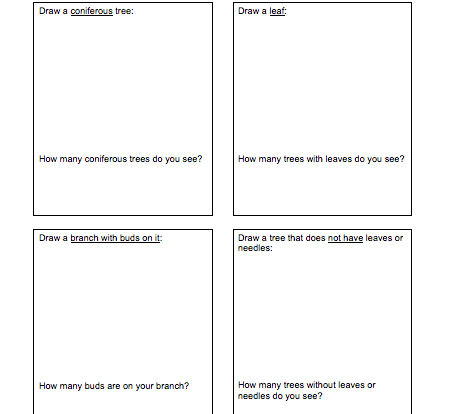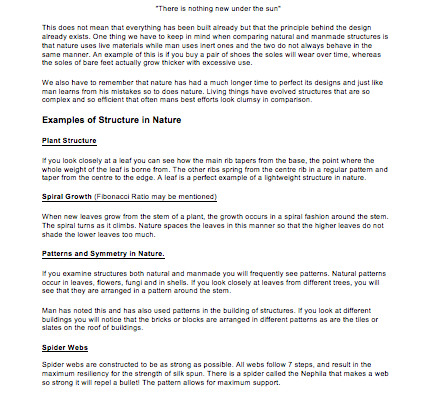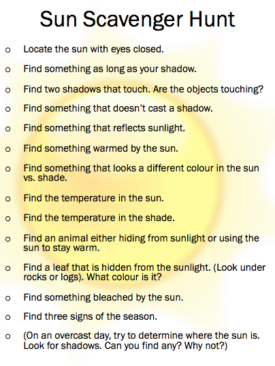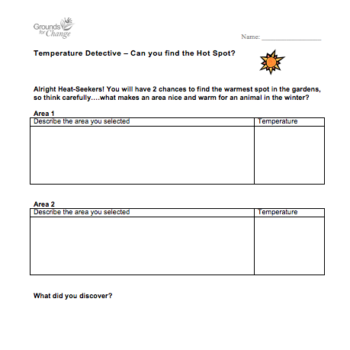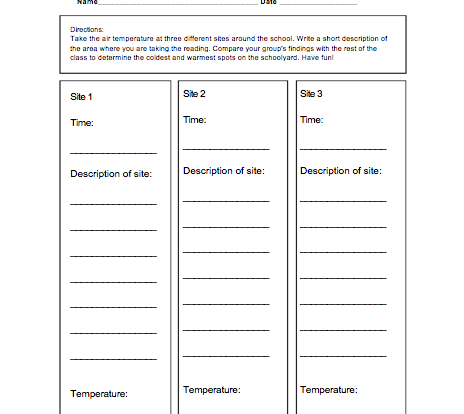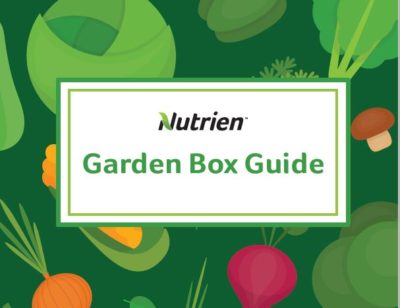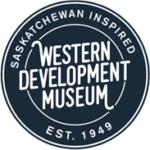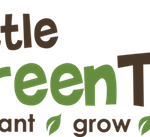-
Discuss deciduous and coniferous plants, plant life cycles related to season and plant parts (leaf, bud, needle, branch, etc.) Students hunt for, draw and tally the trees on the worksheet. Wrap-up: predict seasonal differences.
-
What is a structure? Where did humans get many of their building ideas? Man observes nature, and many of our structures are based on things we see in our gardens, our woods, and even in animals and their homes! In this activity, students will be challenged to look at a garden in terms of human structure, and compare what they see in nature to what they see around them. Wrap up: Discuss students’ variety of answers.
-
Students complete this sun scavenger hunt to learn about sunlight, shadows, temperature and its relationship to plant and animal life in the schoolyard. Wrap up: Discuss sunlight (daylight/ seasonal), how the sun affects the appearance of shadows, temperature variations, animal/plant life and their relationships to sunlight (ie: amphibians), the visible change of seasons.
-
Discuss sun movement (daily, seasonal), day length, temperature, sun placement/tilt, and shadow length. Predict warmest spot in the natural area and discuss importance for animals. In pairs, students place a thermometer in hypothesized warm spot, and have 2 chances to find the “hot spot”. Wrap-up: share warmest area and importance, discuss changes in body shadow and reveal eraser shadow technique: need to have body in line with the sun and the eraser. Sun needs to be at their back.
-
Learn about temperature and variability. Have students take the air temperature at three different sites around the school and write a short description of the areas they chose. Compare finding between groups to determine the coldest and warmest spots on the schoolyard.

